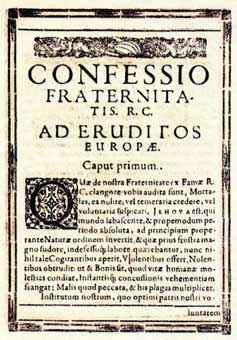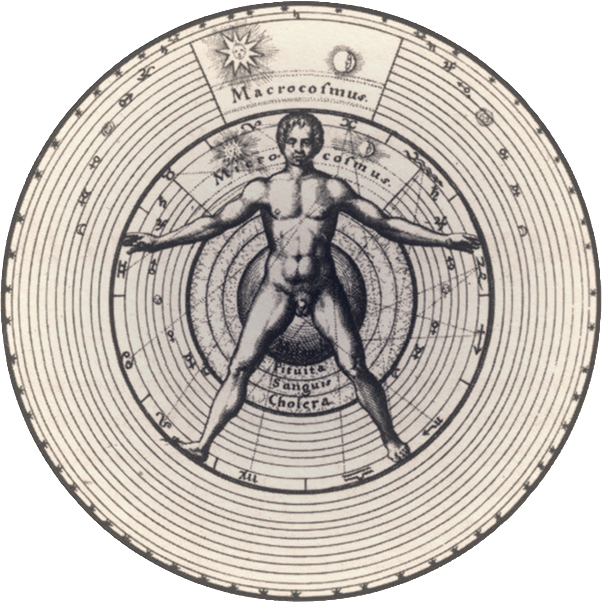|
Rosicrucian Organizations
Rosicrucianism () is a spiritual and cultural movement that arose in early modern Europe in the early 17th century after the publication of several texts announcing to the world a new esoteric order. Rosicrucianism is symbolized by the Rose Cross or Rosy Cross. There have been several Rosicrucian (or Rosicrucian-inspired) organizations since the initial movement was founded, including the Order of the Golden and Rosy Cross (1750s–1790s), the Societas Rosicruciana in Anglia (1865–present), and the Hermetic Order of the Golden Dawn (1887–1903). History Between 1610 and 1615, two anonymous manifestos appeared in early modern Germany and soon after were published throughout Europe. The ''Fama Fraternitatis Rosae Crucis'' (The Fame of the Brotherhood of the Rosy Cross) was circulated in manuscript among German occultists since about 1610, and published at Cassel in 1614. Johannes Valentinus Andreae has been considered the possible author of the work. A literal reading na ... [...More Info...] [...Related Items...] OR: [Wikipedia] [Google] [Baidu] |
Confessio Fraternitatis
The ''Confessio Fraternitatis'' (''Confessio oder Bekenntnis der Societät und Bruderschaft Rosenkreuz''), or simply ''The Confessio'', printed in Kassel (Germany) in 1615, is the second anonymous manifestos, of a trio of Rosicrucian pamphlets, declaring the existence of a secret brotherhood of alchemists and sages who were interpreted, by the society of those times, to be preparing to transform the political and intellectual landscape of Europe. The book is considered to be one of the three foundational manifestos of Rosicrucianism, and inspired Rosicrucian organizations such as Order of the Golden and Rosy Cross (1750s–1790s) and Societas Rosicruciana in Anglia (1865–present). :''"God hath certainly and most assuredly concluded to send and grant to the world before her end, which presently thereupon shall ensue, such a truth, light, life, and glory, as the first man Adam had, which he lost in Paradise, after which his successors were put and driven, with him, to misery. W ... [...More Info...] [...Related Items...] OR: [Wikipedia] [Google] [Baidu] |
Eleusinian Mysteries
The Eleusinian Mysteries () were initiations held every year for the Cult (religious practice), cult of Demeter and Persephone based at the Panhellenic Sanctuary of Eleusis in ancient Greece. They are considered the "most famous of the secret religious rites of ancient Greece". Their basis was a Bronze Age Agrarianism, agrarian cult, and there is some evidence that they were derived from the religious practices of the Mycenean Greece, Mycenean period.Dietrich (1975) ''The origins of Greek Religion''. Bristol Phoenix Press pp. 166, 167Walter Burkert. (1985)''Greek Religion''. Harvard University Press. p. 285 The Mysteries represented the myth of the Persephone#Abduction myth, abduction of Persephone from her mother Demeter by the king of the underworld Hades, in a cycle with three phases: the ''descent'' (loss), the ''search'', and the ''ascent'', with the main theme being the ''ascent'' () of Persephone and the reunion with her mother. It was a major festival during the Hellenistic ... [...More Info...] [...Related Items...] OR: [Wikipedia] [Google] [Baidu] |
Historical Vedic Religion
The historical Vedic religion, also called Vedism or Brahmanism, and sometimes ancient Hinduism or Vedic Hinduism, constituted the religious ideas and practices prevalent amongst some of the Indo-Aryan peoples of the northwest Indian subcontinent (Punjab and the western Ganges plain) during the Vedic period ( 1500–500 BCE). These ideas and practices are found in the Vedic texts, and some Vedic rituals are still practised today. The Vedic religion is one of the major traditions which Origins of Hinduism, shaped modern Hinduism, though present-day Hinduism is significantly different from the historical Vedic religion. The Vedic religion has roots in the Indo-Iranians, Indo-Iranian culture and religion of the Sintashta culture, Sintashta ( 2200–1750 BCE) and Andronovo culture, Andronovo ( 2000–1150 BCE) cultures of Eurasian Steppe. This Indo-Iranian religion borrowed "distinctive religious beliefs and practices" from the non-Indo-Aryan Bactria–Margiana Archaeological Compl ... [...More Info...] [...Related Items...] OR: [Wikipedia] [Google] [Baidu] |
Thomas Vaughan (philosopher)
Thomas Vaughan (17 April 1621 − 27 February 1666) was a Welsh clergyman, philosopher, and alchemist, who wrote in English. He is now remembered for his work in the field of natural magic. He also published under the pseudonym Eugenius Philalethes. His influences included Johannes Trithemius (1462–1516), Heinrich Cornelius Agrippa (1486–1535), Michael Sendivogius (1566–1636), and Rosicrucianism (early 17th century). Life A Royalist clergyman from Brecon, Wales, Thomas was the twin brother of the poet Henry Vaughan," enry'stwin brother was Thomas Vaughan (1621–1666). . .Vaughan, Henryin Welsh Biography Online, at National Library of Wales both being born at Newton, in the parish of St. Bridget's, in 1621.The twins were the sons of Thomas Vaughan of Trenewydd, Newton . . . "who m. the heiress of Newton in Llansantffraed.VAUGHAN family, of Tretower Courtin Welsh Biography Online, at National Library of Wales. He entered Jesus College, Oxford, in 1638, and remained there ... [...More Info...] [...Related Items...] OR: [Wikipedia] [Google] [Baidu] |
Robert Fludd
Robert Fludd, also known as Robertus de Fluctibus (17 January 1574 – 8 September 1637), was a prominent English Paracelsian physician with both scientific and occult interests. He is remembered as an astrologer, mathematician, cosmologist, Qabalist, and Rosicrucian. Fludd is best known for his compilations in occult philosophy. He had a celebrated exchange of views with Johannes Kepler concerning the scientific and hermetic approaches to knowledge. Early life He was born at Milgate House, Bearsted, Kent, on 17 January 1573/4. He was the son of Sir Thomas Fludd, a high-ranking governmental official (Queen Elizabeth I's treasurer for war in Europe), and Member of Parliament. His mother was Elizabeth Andrews Fludd. A collage of 12 Coats of Arms of Fludd ancestors are shown in the painting above his right shoulder. His paternal arms goes back to Rhirid Flaidd whose name originates from Welsh meaning bloody or red wolf. Education He entered St John's College, Oxfo ... [...More Info...] [...Related Items...] OR: [Wikipedia] [Google] [Baidu] |
Michael Maier
Michael Maier (; 1568–1622) was a German physician and counsellor to Rudolf II, Holy Roman Emperor, Rudolf II Habsburg. He was a learned Alchemy, alchemist, epigramist, and amateur composer. Early life Maier was born in Rendsburg, Duchy of Holstein, Holstein, the son of a specialist in beadwork in embroidery named Peter Maier. He studied philosophy and medicine at Rostock (1587–1591), Frankfurt (Oder) (M.A. 1592), and Padua (1595–1596). Maier left Padua abruptly after getting involved in a fight, injuring the other party, and being arrested. He went on to the University of Basel, where he attained a doctorate in medicine in October 1596. His doctoral thesis, ''De epilepsia'' was dedicated to Matthias Carnarius. Maier then returned to Holstein to practice medicine. Around 1599, he became interested in alchemy and attempted to create an alchemical concordance, synthesizing the works of different authors. For Florin George Călian, Florian G. Calian, Maier is " an alchemis ... [...More Info...] [...Related Items...] OR: [Wikipedia] [Google] [Baidu] |
Metaphor
A metaphor is a figure of speech that, for rhetorical effect, directly refers to one thing by mentioning another. It may provide, or obscure, clarity or identify hidden similarities between two different ideas. Metaphors are usually meant to create a likeness or an Analogy, analogy. Analysts group metaphors with other types of figurative language, such as antithesis, hyperbole, metonymy, and simile. According to Grammarly, "Figurative language examples include similes, metaphors, personification, hyperbole, allusions, and idioms." One of the most commonly cited examples of a metaphor in English literature comes from the "All the world's a stage" monologue from ''As You Like It'': All the world's a stage, And all the men and women merely players; They have their exits and their entrances And one man in his time plays many parts, His Acts being seven ages. At first, the infant... :—William Shakespeare, ''As You Like It'', 2/7 This quotation expresses a metaphor because the w ... [...More Info...] [...Related Items...] OR: [Wikipedia] [Google] [Baidu] |
Ludibrium
Ludibrium is a word derived from Latin (plural ), meaning a plaything or a trivial game. In Latin denotes an object of fun, and at the same time, of scorn and derision, and it also denotes a capricious game itself: e.g., (Virgil), "the playthings of the winds", (Lucretius), "the plaything of the waves"; ( Plautus), "Until now you have been toying with me." The term "ludibrium" was used frequently by Johann Valentin Andreae (1587–1654) in phrases like "the ludibrium of the fictitious Rosicrucian Fraternity" when describing the Rosicrucian Order, most notably in his '' Chymical Wedding of Christian Rosenkreutz'', published anonymously in 1616, of which Andreae subsequently claimed to be the author and which has been taken seriously, as virtually a third of the Rosicrucian Manifestos. However, in his ''Peregrini in Patria errores'' (1618) Andreae compares the world to an amphitheatre where no one is seen in their true light. Paul Arnold translated Andreae's usage as ''far ... [...More Info...] [...Related Items...] OR: [Wikipedia] [Google] [Baidu] |
Chymical Wedding Of Christian Rosenkreutz
The ''Chymical Wedding of Christian Rosenkreutz'' () is a German book edited in 1616 in Strasbourg. Its anonymous authorship is attributed to Johann Valentin Andreae. The ''Chymical Wedding'' is often described as the third of the original manifestos of the mysterious "Fraternity of the Rose Cross" (Rosicrucians), although it is markedly different from the '' Fama Fraternitatis'' and '' Confessio Fraternitatis'' in style and in subject matter. As one of the three foundational Rosicrucian Manifestos, the book also inspired several Rosicrucian organizations such as Order of the Golden and Rosy Cross (1750s–1790s) and Societas Rosicruciana in Anglia (1865–present). It is an allegoric romance (story) divided into Seven Days, or Seven Journeys, like Genesis, and recounts how Christian Rosenkreuz was invited to go to a wonderful castle full of miracles, in order to assist the Chymical Wedding of the king and the queen, that is, the ''husband'' and the ''bride''. This manifest ... [...More Info...] [...Related Items...] OR: [Wikipedia] [Google] [Baidu] |
Christian Mysticism
Christian mysticism is the tradition of mystical practices and mystical theology within Christianity which "concerns the preparation f the personfor, the consciousness of, and the effect of ..a direct and transformative presence of God" or divine ''love''. Until the sixth century the practice of what is now called mysticism was referred to by the term ''contemplatio'', c.q. ''theoria'', from '' contemplatio'' (Latin; Greek θεωρία, ''theoria''), "looking at", "gazing at", "being aware of" God or the divine.William Johnson, ''The Inner Eye of Love: Mysticism and Religion'' (HarperCollins 1997 ), p. 24 Christianity took up the use of both the Greek (''theoria'') and Latin (''contemplatio'', contemplation) ... [...More Info...] [...Related Items...] OR: [Wikipedia] [Google] [Baidu] |
Alchemy
Alchemy (from the Arabic word , ) is an ancient branch of natural philosophy, a philosophical and protoscientific tradition that was historically practised in China, India, the Muslim world, and Europe. In its Western form, alchemy is first attested in a number of pseudepigraphical texts written in Greco-Roman Egypt during the first few centuries AD.. Greek-speaking alchemists often referred to their craft as "the Art" (τέχνη) or "Knowledge" (ἐπιστήμη), and it was often characterised as mystic (μυστική), sacred (ἱɛρά), or divine (θɛíα). Alchemists attempted to purify, mature, and perfect certain materials. Common aims were chrysopoeia, the transmutation of " base metals" (e.g., lead) into "noble metals" (particularly gold); the creation of an elixir of immortality; and the creation of panaceas able to cure any disease. The perfection of the human body and soul was thought to result from the alchemical ''magnum opus'' ("Great Work"). The ... [...More Info...] [...Related Items...] OR: [Wikipedia] [Google] [Baidu] |







